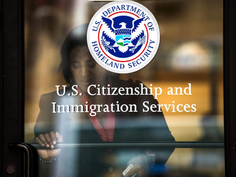World Children's Day: Standing Up for Children's Rights Caught in War
- Thiloththama Jayasinghe

- Sep 30, 2024
- 4 min read
Thiloththama Jayasinghe, Jadetimes Staff
T. Jayasinghe is a Jadetimes news reporter covering Political News

World Children's Day, commemorated yearly on November 20th, is a day set apart to raise awareness on behalf of the welfare and concerns of children everywhere. The United Nations, in 1954, established this day to galvanize the world into action to ensure all children enjoy their rights and grow up in an enabling environment that is safe and protective of their lives. But this day takes on an added meaning when one thinks about the millions of children affected by war-who, because of the general situation and conditions of war, suffer from a special kind of endangerment and hardship which puts in jeopardy their well-being and development.
The Cruel Face of War for Children
Children in conflict areas form one of the most vulnerable populations in the world. An estimated number of 400 million kids, according to UNICEF, are said to be living in states touched by armed conflict. The children have been facing a number of difficulties in their lives:
1."Displacement and Refugee Status": The armed conflicts have forced many families to flee their homes. An estimated several million children become refugees or IDPs due to displacement, which upsets their access to education and healthcare and also results in emotional instability.
2. "Psychological Trauma": Exposure to violence, loss of family, and instability result in severe psychological trauma. Many children develop post-traumatic stress disorder, anxiety, and depression because their emotional and social development has been impeded.
3. "Disruption of Education": War often involves the destruction of schools or turning those educational facilities for military purposes. It ends up with millions of children missing their opportunities for education, and thus their potential for life is grossly reduced.
4. "Recruitment into Armed Groups": Many children in conflict areas are being forcibly recruited into armed groups or gangs. This not only puts their lives at risk but also denies them a chance to live through their childhood and be grown into productive futures without violence.
5. "Health Risks": Wars accentuate health crises, like malnutrition and diseases, which increase owing to the impossibility of caring for their basic needs; thus, health care becomes inaccessible. Children face a greater threat to health and mortality.
Understanding Children's Rights
CRC is a charter adopted by the United Nations in 1989 and prescribes the fundamental rights of all children, including those who come into contact with war. Some of the fundamental aspects of this convention include:
Survival and Development : The right to life, survival, and development is an inherent birthright of each child. This is so important in the context of children in the war theatre, where the chances of mortality increase manifold due to blatant violence and crippling privation.
Protection from Violence :CRC seeks protection from all forms of violence and exploitation, scenarios that easily turn commonplace in the theatres of war conflict.
Participation : Giving due respect to the child's right to have an opinion and be a part of decisions that involve his or her life, one should provide ample opportunities for children to contribute to peace processes and rebuild their communities in ways that will promote resilience and healing.
Global Initiatives and Efforts
These are various organizations and programs working for the rights of children in a situation of war. Mainly, UNICEF, Save the Children, and other NGOs are involved in providing humanitarian aid to these children, opportunities for education, and psychosocial support. Crucial initiatives include:
Educational Programs : Temporary learning facilities in refugee camps ensure that during much turbulence, children continue getting an education, hence bringing some sense of normalcy and stability.
Reintegration Programs: For those children who were recruited in the armed groups, comprehensive programs of reintegration ensure psychological support, skills training, and welcoming communities to facilitate their integration into civil life.
Advocacy and Awareness: Every World Children's Day is a rally for the children in each and every story and struggle, henceforth expected to raise awareness about international action toward the protection of their rights.
Role of the International Community
This is not a duty of local governments or NGOs only, but a concerted action on the part of the international community for the protection of war-affected children. An action in this regard will be as follows:
- Strengthening International Laws : Advocacy for stricter enforcement of international laws that protect children in conflict zones, such as the Optional Protocol on the Involvement of Children in Armed Conflict.
- More Humanitarian Aid : Donor countries and organizations must pledge sufficient funds and resources toward assisting the children who are among the victims of war, their education, healthcare, and psychosocial care.
- Encourage Peaceful Settlement : The diplomatic channels must take up the imperative for the protection of children in conflict and include them in the peacemaking process because they can be the agents of change.

On this World Children's Day, special light must be thrown on those millions of children living in war zones. Advocacy for the protection of their rights needs to be high on the agenda of governments, NGOs, and individuals. In raising awareness, offering support, and advocating policies that protect children, we can work together for a future where all children have equal opportunities to live in peace. Let us work together so that the rights of all children are upheld, but above all, those who have fallen in the destructive path of war.











































Comments